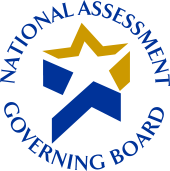Although No State Improved in Both Math and Reading on the NAEP, the Education Recovery Scorecard Highlights the Work of Over 100 Districts Performing Above Pre-Pandemic Levels in Both Math and Reading
A collaboration of:



Project Leaders
“The rescue phase is over. The federal relief dollars are gone. It is time to pivot from short-term recovery to longer term challenges such as reducing absenteeism and addressing the slide in literacy. Whether it is early literacy, improving instructional materials, strengthening accountability or high school redesign, states are where education reform is happening now. What’s been missing is any cross-state effort to evaluate those reforms and spread what’s working. We are launching a new project for states wanting to learn together.”

Thomas Kane
Walter H. Gale Professor of Education and Economics“The slide in average NAEP scores masks a pernicious inequality: scores have declined far more in America’s middle- and low-income communities than in its wealthy ones. The good news is that it could have been worse: the federal investment in public schools during the pandemic paid off, limiting academic losses in high-poverty districts. The pandemic highlighted inequalities in our education system; it didn’t create them. And so we don’t need just `pandemic recovery’ now, but long-term structural reform. A real `recovery’ requires that we make sure students in middle and low-income communities have all the resources they need to thrive in school.”

Sean Reardon
Professor of Poverty and Inequality in EducationDistrict Success Stories
These case studies are examples of how school districts have improved student outcomes through innovative teaching methods, curriculum, and other programs.
Contact Us
For more information or an answer to a specific question regarding the data, please email Sam Stockwell, Director of Communications and Strategy at: samuel_stockwell@gse.harvard.edu.
Partners















